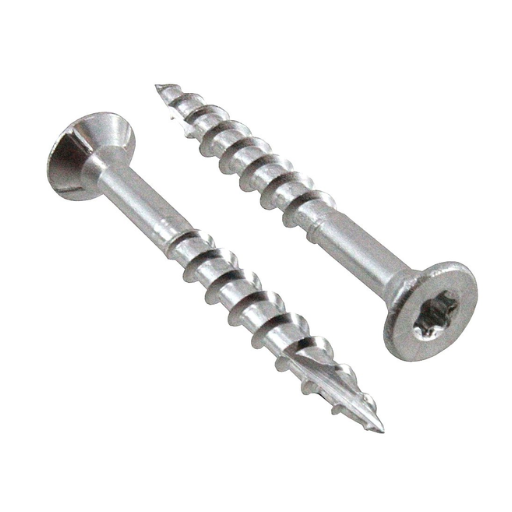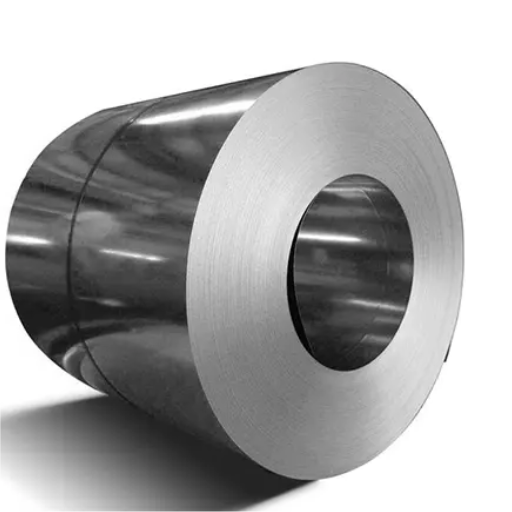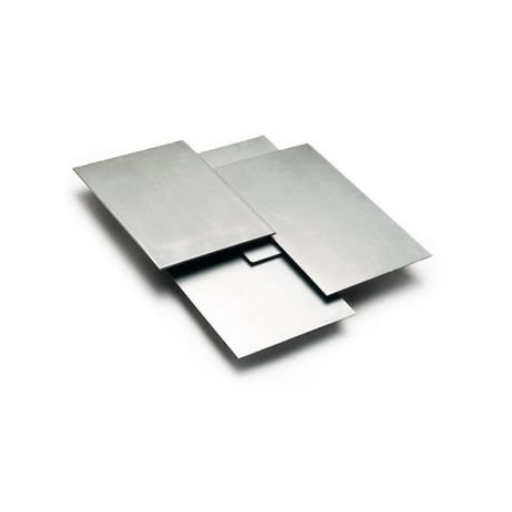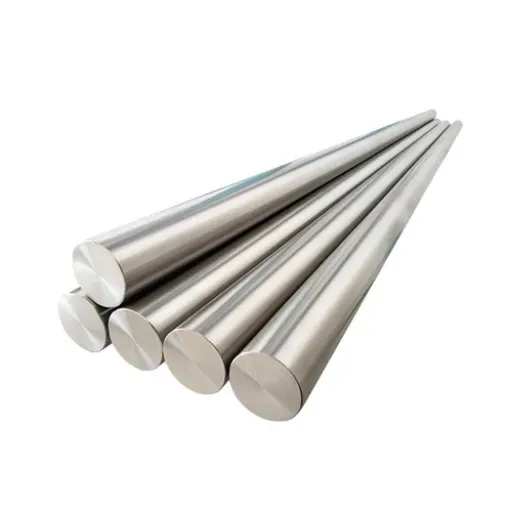Stainless steel is favored in many industries due to its versatility, lasting durability, and anti-corrosive properties. 305 stainless steel is unique among its peers for its remarkable composition and performance characteristics. Knowing the properties and uses of 305 stainless steel can better inform your decisions if you’re in the manufacturing, automotive, or food-processing industries. In this guide, we provide everything you need to know about the composition, key features, and advantages of 305 stainless steel and the reasons it is preferred for specific applications. So, prepare to learn how 305 stainless steel can transform your upcoming project.
What is 305 Stainless Steel?

305 stainless steel is classified as an austenitic stainless steel due to its high corrosion resistance and excellent formability. 305 stainless steel stands out from the rest of the 300-series stainless steels due to its higher nickel composition, which improves its shapeability without compromising structural soundness. This unique advantage makes 305 stainless steel a sought-after resource in the food-processing industry, automotive components, and intricate decorative items requiring complicated shapes. Its durability and excellent oxidation and staining resistance make it desirable for functional and aesthetic applications.
Characteristics of 305 Stainless Steel
Stainless steel grade 305 is austenitic, meaning it has a high percentage of chromium and nickel, thus giving it exceptional corrosion resistance and high ductility. One of the most distinguishing attributes of 305 stainless steel is its work-hardening rate, which is significantly lower than other grades like 301 or 304. This property enables the material to be easily fabricated into complex forms while preserving its strength and structural integrity. Its primary alloy constituents typically include:
- Chromium: 17.0% to 19.0% – Protects against oxidation and corrosion.
- Nickel: 10.5% to 13.0% – Improves ductility and resistance to corrosion.
- Manganese: Up to 2.0% – Increases toughness of the steel.
- Carbon: Maximum of 0.12% – Ensures the material retains hardness while being machinable.
Mechanical Properties
- Yield Strength (0.2% offset): Approx. 30 ksi (205 MPa)
- Tensile Strength: 75 ksi (515 MPa)
- Elongation (in 2 inches): Minimum 40%
- Hardness (Rockwell B): Max 88
Corrosion Resistance
The high chromium and nickel content of 305 stainless steel makes it superior in oxidation or staining environments, such as those subject to mild acids, moisture, or food-grade processing chemicals.
Uses
- 305 stainless steel’s distinctive characteristics make it appropriate for numerous sectors, including:
- Food and Beverage Industry – Manufacturing culinary utensils, kitchen basin sinks, and culinary equipment because of its tolerance to food acids and staining.
- Automotive – Insulation brackets trim and decorative parts.
- Jewelry, watch bands, and other durable yet attractive products.
The ease with which 305 stainless steel can be adapted to harsh shaping processes without fracturing makes it a superb choice for designs requiring precise detail or deep drawing.
Applications of 305 Stainless Steel
| Application | Description |
|---|---|
| Deep Drawing | Ideal for intricate shapes and deep-drawn parts. |
| Kitchen Utensils | Used in cookware and kitchen equipment. |
| Electronic Enclosures | Suitable for electronic housing applications. |
| Heat Exchangers | Common in industrial heat transfer systems. |
| Pipes and Valves | Used in plumbing and fluid systems. |
| Cold-Headed Screws | Applied in fasteners like screws and rivets. |
| Tank Covers | Utilized in storage and industrial tanks. |
| Barrels and Shells | Used in manufacturing barrels and casings. |
How Does 305 Compare to Other Stainless Steel Grades?
| Grade | Key Features | Applications | Corrosion Resistance | Formability |
|---|---|---|---|---|
| 305 | High nickel, low work hardening | Deep drawing, kitchen utensils | Moderate | Excellent |
| 304 | General-purpose, lower nickel content | Construction, food processing | Good | Good |
| 303 | Added sulfur for machinability | Machined parts, fasteners | Lower | Moderate |
| 316 | Molybdenum for superior corrosion | Marine, chemical processing | Excellent | Good |
Exploring the Mechanical Properties of 305 Stainless Steel

305 stainless steel is highly regarded for its resistance to corrosion and stress relief for fabrication processes due to its ease of fabrication. Its work hardening rate is lower than that of other austenitic stainless steels, which is beneficial for deep drawing and spinning operations. As well, its mechanical strength is moderate, which allows ductility and strength for multiple applications. This grade is typically picked because of its moisture and mildly acidic atmosphere stability. To summarize, 305 stainless steel is ideal for structures requiring excellent formability, corrosion resistance, and mid-strength ductility.
Understanding Tensile Strength and Durability
Tensile strength and durability pertain to a material’s pulling and wearing capabilities in a given timeframe, guaranteeing reliability even when subjected to extreme conditions.
The Impact of Work Hardening on Performance
Work hardening greatly enhances a material’s strength and stamina against deformation under stress. I believe this benefits structures that require continual repetitive forces to maintain performance and integrity for long periods of one-set mechanical action.
Applications Requiring Cold Work and Deep Drawing
Cold work and deep drawing are some of the most used techniques in parts manufacturing industries because of their ability to make complex, finely-shaped components with great strength. The significant advantages of these processes are the improvement of the mechanical properties of the materials and considerable savings in time and cost in the production process. Here are five examples of industries that mainly rely on cold work and deep drawing:
- Automotive Industry
Deep drawing and cold work are widely used in the automotive industry to make fuel tanks, car body panels, and chassis parts. These processes achieve dependable strength and light weight, of the utmost importance for vehicle fuel economy.
- Aerospace Industry
Aerospace manufacturers use cold work and deep drawing to make parts like fuselage sections, engine mounts, and other secondary structure parts light yet very strong. The balance of safety and weight is fundamental in aircraft design and construction.
- Metal Packaging
The Metal packaging industry primarily utilizes deep drawing to make seamless metal cans, lids, and other containers used in the food and beverage industry. Deep drawing leaves a smooth and polished surface, adds strength to the container, and prevents deformation during handling and transportation.
- Electronics
Deep drawing and cold work processes are used to fabricate everyday products like kitchen sinks, stove burners, and parts like washing machine drums. These techniques enhance the efficiency of production and strengthen these durable goods.
- Healthcare
Deep drawing and cold work are imperative when making exact and accurate parts for surgical instruments, implants, and diagnostic devices. These biocompatible applications are possible because of the stringent tolerances and accuracy required by the processes.
Examining the Physical Properties of 305 Stainless Steel

| Property | Value |
|---|---|
| Density | 8 g/cm³ (0.289 lb/in³) |
| Melting Point | 1454°C (2650°F) |
| Tensile Strength | 585 MPa (84,800 psi) |
| Yield Strength | 260 MPa (37,700 psi) |
| Elongation at Break | 50% |
| Hardness (Brinell) | 80 |
| Thermal Conductivity | 16.3 W/mK (113 BTU in/hr.ft².°F) |
| Thermal Expansion | 17.3 µm/m°C (9.61 µin/in°F) |
| Modulus of Elasticity | 193 GPa (28,000 ksi) |
| Specific Heat | 0.12 Btu/lb°F |
How Nickel Content Influences 305 Stainless Steel
| Aspect | Influence of Nickel Content |
|---|---|
| Work Hardening | Reduces the tendency, enabling more deformation. |
| Ductility | Enhances flexibility and prevents cracking. |
| Formability | Improves deep drawing and shaping capabilities. |
| Corrosion Resistance | Increases resistance to oxidation and tarnishing. |
| Magnetic Properties | Maintains a non-magnetic nature after cold working. |
| Thermal Stability | Supports performance in high-temperature settings. |
The Role of Chromium in Corrosion Resistance
The role of chromium in the resistance of 305 stainless steel to corrosion cannot be overemphasized. He notes that this metal creates a passive oxide layer on the surface of the alloy when present in sufficient amounts. This chromium oxide film is fragile, yet it effectively prevents the penetration of oxygen and moisture into the underlying metal that would trigger corrosion. In 305 stainless steel, chromium is maintained in the range of 17%-19% and is adequate to ensure the protective layer is sustained, even in moderate corrosive conditions.
Recent studies indicate that an increase in chromium content leads to a decrease in corrosion rate. To illustrate with a case, stainless steel, which contains more chromium, is less susceptible to pitting and crevice corrosion in an acidic environment. As a result of self-healing the oxide layer, chromium increases durability. It thus becomes a desirable component for chemical processing, food storage, and marine applications that demand high endurance from oxidizing agents.
As mentioned above, chromium’s combination with other constituents like nickel improves the stability of passive films even further. This synergy improves resistance to localized corrosion and adds protection at elevated temperatures and in chloride-containing environments. In general, Chromium is the most critical element that influences stainless steel’s performance and service life in corrosive environments.
Exploring Non-Magnetic Characteristics
Stainless steel’s non-magnetic properties are of unique interest due to its microstructure and added elements during production. While some stainless steels exhibit magnetism, austenitic stainless steels, especially 300 series ones like 304 and 316, are mostly non-magnetic when annealed. The following are five primary points summarizing the reasons some types of stainless steels are non-magnetic:
- Austenitic Microstructure
Stabilized by nickel, the austenitic phase in stainless steel inhibits the development of ferromagnetic phases, thus reducing magnetism.
- Nickel Content
Due to the stabilization of the face-centered cubic (FCC) structure, the high nickel content of austenitic stainless steel further enhances non-magnetism.
- Cold Work Effects
Non-magnetic austenitic stainless steels tend to become slightly magnetic due to working processes like bending and rolling.
- Alloying Elements
Non-magnetic properties can be retained by substituting manganese and nitrogen with nickel.
- Heat Treatment
Excessive mechanical manipulation of stainless steel can lead to undesirable magnetic qualities. Proper heat treatment, which removes the residual magnetic properties, can counter these.
Knowing these properties is essential while choosing the correct stainless steel grade for precision applications like medical devices and electronics requiring non-magnetic features.
Understanding the Nominal Composition of 305 Stainless Steel

| Element | Content (%) |
|---|---|
| Iron (Fe) | 67 |
| Chromium (Cr) | 17.0–19.0 |
| Nickel (Ni) | 10.5–13.0 |
| Manganese (Mn) | ≤ 2.0 |
| Silicon (Si) | ≤ 1.0 |
| Carbon (C) | ≤ 0.12 |
| Phosphorus (P) | ≤ 0.045 |
| Sulfur (S) | ≤ 0.030 |
What is the UNS S30500 Designation?
Type 305 Stainless Steel is an austenitic stainless steel grade known by the UNS designation S30500. It is a 300-series stainless steel alloy with enhanced formability due to its composition. It is non-magnetic and has good corrosion resistance. The chemical composition of UNS S30500 is specially tailored to lower work hardening rates, which makes it suitable for severe cold forming processes.
Chemical Composition of UNS S30500
As per AISI standards, the nominal chemical composition for UNS S30500 is given below:
- C: 0.12% max
- Mn: 2.00% max
- Si: 1.00% max
- Cr: 17.00% – 19.00%
- Ni: 10.00% – 13.00%
- P: 0.045% max
- S: 0.03% max
The presence of nickel in these quantities is strategically valuable because it renders the material non-ferromagnetic, essential for non-magnetic applications.
Key Properties of UNS S30500
- Corrosion Resistance: It resists oxidation and corrosion in specific environments, especially in weakly acidic and basic solutions. It has excellent oxidation and corrosion resistance.
- Mechanical Strength: Moderate strength with good ductility.
- Formability: Considered best suited for deep drawing, spinning, or any other cold forming operation, due to the lower work hardening rate.
- Non-Magnetic Behavior: Unlike many stainless steel varieties, UNS S30500 is important for certain industrial uses because it can retain its non-magnetic property even after cold working.
UnS S30500 Applications
This grade of stainless steel is often used in applications where high corrosion resistance and high formability are needed. Common applications include:
- Trim and other non-visible external components in automobiles
- Kitchen equipment is produced using deep drawing techniques
- Medical and surgical tools and instruments
- Electronic components that require non-magnetic materials
Knowledge of the UNS S30500 classification and its distinct chemical and physical properties aids engineers, designers, and manufacturers in deciding which material to use for which specific needs.
Details of the Composition of 305
| Element | Content (%) | Key Role |
|---|---|---|
| Iron (Fe) | 67 | Base metal, provides structural strength. |
| Chromium (Cr) | 17.0–19.0 | Enhances corrosion resistance. |
| Nickel (Ni) | 10.5–13.0 | Improves ductility and formability. |
| Manganese (Mn) | ≤ 2.0 | Increases tensile strength. |
| Silicon (Si) | ≤ 1.0 | Improves heat resistance. |
| Carbon (C) | ≤ 0.12 | Reduces brittleness, enhances strength. |
| Phosphorus (P) | ≤ 0.045 | Improves machinability. |
| Sulfur (S) | ≤ 0.030 | Enhances machinability. |
How AMS 5514 Standards Apply
| Aspect | Details |
|---|---|
| Material Type | Corrosion-resistant steel sheet, strip, plate. |
| Composition | 18% Chromium, 11% Nickel. |
| Applications | Deep drawing, spinning, and forming processes. |
| Heat Treatment | Solution heat-treated for optimal properties. |
| Corrosion Resistance | Suitable for harsh environments. |
| Standards Referenced | SAE AMS5514, ASTM A240. |
| Key Properties | High ductility, non-magnetic, durable. |
305 Stainless Steel vs 316 Stainless Steel: What are the Differences?

| Aspect | 305 Stainless Steel | 316 Stainless Steel |
|---|---|---|
| Nickel Content | 10.5–13% | 10–14% |
| Chromium Content | 18–20% | 16–18% |
| Molybdenum Content | None | 2–3% |
| Corrosion Resistance | Moderate, suitable for standard environments | High, ideal for chloride-rich environments |
| Formability | Excellent, ideal for deep drawing | Good, but less than 305 |
| Strength | Moderate tensile strength | Higher tensile strength |
| Applications | Kitchen equipment, automotive trim | Marine, chemical processing, and medical devices |
| Cost | Lower | Higher due to molybdenum content |
Comparing Corrosion Resistance
Analyzing the corrosion resistance properties of 305 and 316 stainless steel reveals some crucial differences in performance based on the environment. Below are five primary aspects regarding their corrosion-resistant characteristics.
- Resisting Chloride
- Containing molybdenum, 316 stainless steel is proficient in resisting chloride-induced pitting and crevice corrosion.
- Due to significantly less molybdenum, 305 stainless steel performs remarkably in corrosive environments but is less effective in high-chloride areas.
- Resisting Oxidation
- Both 305 and 316 stainless steels are highly resistant to oxidation at high temperatures, but due to their enhanced chemical composition, 316 is more effective in prolonged or extremely harsh exposure.
- Acid Dominant Areas
- 316 stainless steel is most suitable for artificial and chemical processing applications because it can sustain damage from strong sulfuric and hydrochloric acids.
- For aggressive environments, 305 stainless steel offers moderate resistance to acids.
- Stress Corrosion Cracking (SCC) Resisting
- Particularly in hot, salty, or humid conditions, 316 exhibits unparalleled stress corrosion cracking resistance, especially in marine applications.
- With a higher percentage of nickel, 305 is less proficient in SCC.
- General Environmental Corrosion
- 305 stainless steel has excellent performance capabilities in mildly corrosive environments, such as indoors or outdoors, and non-coastal regions.
- Marine, coastal, and industrial environments where exposure to aggressive agents is likely to occur more often are substantially harsher, but they’re no match for 316.
After understanding these distinctions, industries can discern which grade of stainless steel to use based on the right exposure and application criteria.
Differences in Mechanical Properties
Both 304 and 316 stainless steels are very strong and durable, but 316 is better suited for demanding applications as it has slightly higher tensile and yield strength due to its molybdenum content.
Which Alloy is Best for Deep Drawing Applications?
For deep drawing applications, 304 stainless steel is the best choice. 304 has good strength, corrosion resistance, and excellent formability, making it ideal for this process. Even though 316 stainless steel has better corrosion resistance, 304’s superior formability makes it the better option for deep drawing tasks.
References
- Nickel Institute: Design Guidelines for the Selection and Use of Stainless Steels – A comprehensive guide on stainless steel types and their applications.
- ASME Digital Collection: Effect of Cold Work on Elevated-Temperature Properties of Types 301, 305, and 310 Stainless Steels – A study on the properties of 305 stainless steel under cold work conditions.
- ASM International: Wrought Stainless Steels: Selection and Application – A detailed resource on stainless steel properties and applications.
Frequently Asked Questions (FAQ)
Q: What is 305 stainless steel?
A: Type 305 stainless steel is an austenitic stainless steel known for its higher nickel content and low work hardening rate. It is often used in applications requiring excellent formability and good corrosion resistance.
Q: How does 305 stainless steel compare to 304 stainless steel?
A: While 305 and 304 are austenitic stainless steels, 305 grade has a higher nickel content, which provides a lower work hardening rate than 304. This makes 305 ideal for applications requiring extensive forming and shaping.
Q: What are the common applications of type 305 stainless steel?
A: Type 305 stainless steel is commonly used to produce screws, fasteners, kitchen equipment, and decorative items. Its excellent formability and good corrosion resistance make it suitable for these applications.
Q: Why is 305 stainless steel used in coil form?
A: 305 stainless steel is often used in coil form due to its excellent formability and low work hardening rate. This makes it ideal for processes that require extensive shaping and bending, such as cold rolling and annealing operations.
Q: Is 305 stainless steel magnetic?
A: No, 305 stainless steel is nonmagnetic due to its austenitic structure, which remains stable after annealing and cold working.
Q: What role does molybdenum play in 305 stainless steel?
A: Although 305 stainless steel typically does not contain molybdenum, adding molybdenum in similar grades enhances corrosion resistance, particularly against chloride-induced pitting and cracking.
Q: How does the low work hardening rate benefit 305 grade stainless steel?
A: 305-grade stainless steel’s low work hardening rate allows it to be extensively formed and shaped without cracking. This property is particularly beneficial in manufacturing processes that involve significant deformation.
Q: Can 305 stainless steel be used in automotive applications?
A: Yes, 305 stainless steel can be used in automotive applications, especially where excellent formability and corrosion resistance are required. However, specific environmental conditions, such as exposure to chlorides, must be considered.
Q: What is the significance of chromium-nickel content in 305 stainless steel?
A: The chromium-nickel content in 305 stainless steel contributes to its excellent corrosion resistance and formability. The higher nickel content compared to other grades like 304 reduces its work hardening rate, making it suitable for applications requiring extensive forming.







